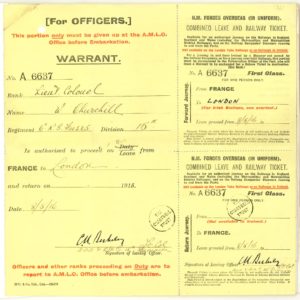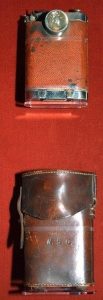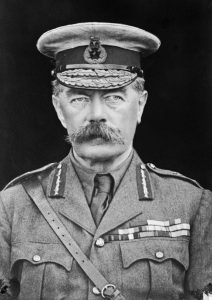
Finest Hour 181
The Great War and Different Memories: Churchill, Haig, and the Legacy of Blame
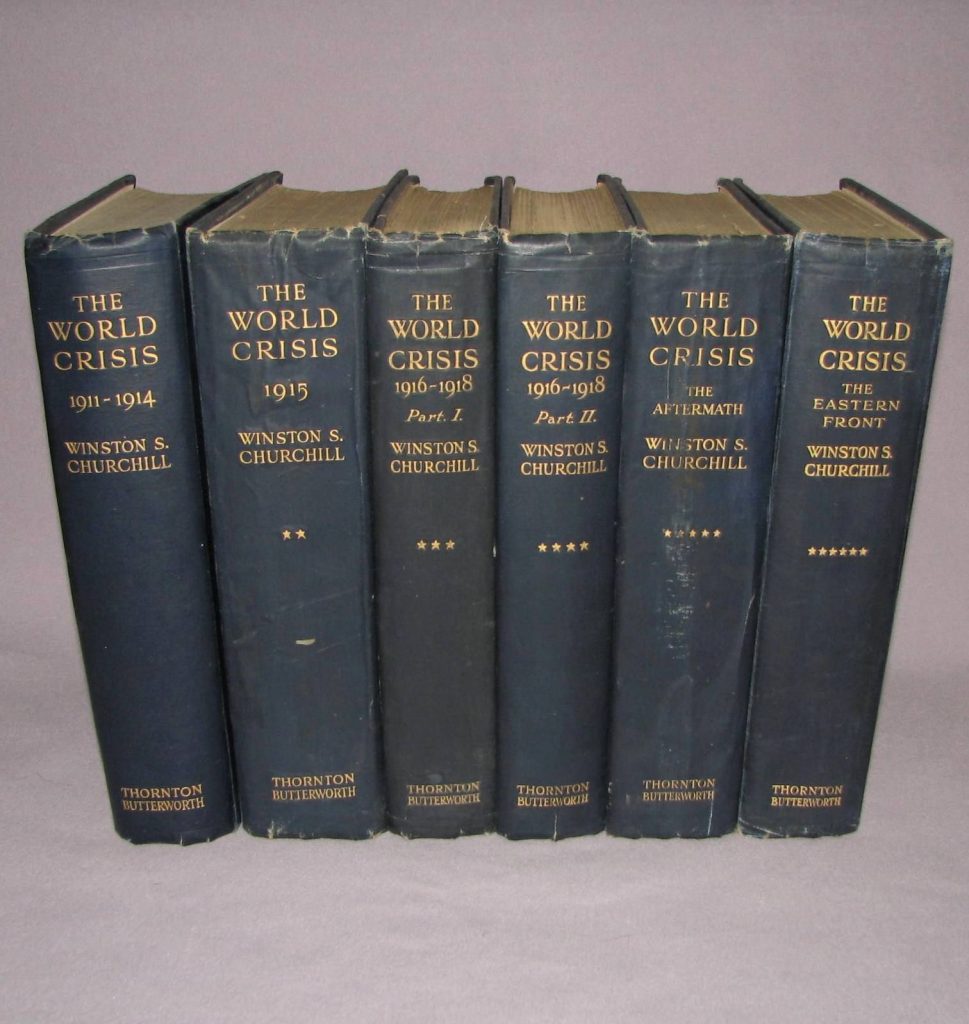
Churchill’s First World War Memoirs
December 30, 2018
Finest Hour 181, Summer 2018
Page 14
By Mason W. Watson
Historians commonly represent Winston Churchill’s relationship with Field Marshal Sir Douglas Haig as antagonistic. Churchill was one of the British government’s most outspoken proponents of an “eastern” strategy during the First World War, urging operations against the junior members of the Central Powers. Haig’s own views on strategy, on the other hand, were resolutely orthodox. A committed “westerner,” the Commander-in-Chief of the British Expeditionary Force (BEF) believed that victory could only be achieved through offensives against the main force of the German army in France, and he was suspicious at best of any diversion of resources and manpower to subsidiary theaters.
Churchill and Haig’s disagreements over such fundamental issues made the two men obvious opponents in wartime debates as well as the controversies that persisted long after the war had ended. According to one historian, Churchill’s postwar publications “set many of the terms for the debates which would rage around Haig’s reputation for the rest of the twentieth century.”1 Churchill played a key role in perpetuating the misleading image of Haig as an inept “butcher” who sacrificed a generation of Britons in futile offensives like the Somme and Passchendaele.
The fact that Churchill’s writings had such an effect on Haig’s reputation is ironic given their mutual respect and friendly personal relations. Before the war, Churchill regarded Haig as one of Britain’s foremost military minds. His high regard for Haig seems to have survived the war, and the two deliberately avoided open conflict while pursuing very different agendas in the postwar “battle of the memoirs.” In The World Crisis, published in the 1920s, Churchill sought to defend Haig’s decisions even as he attacked his preferred strategy—going so far as to make the Chief of the Imperial General Staff (CIGS), General Sir William Robertson, a scapegoat for Haig’s poor operational methods. It was only later in the 1930s that Churchill engaged in overt criticism of Haig’s generalship. Even then his critiques were far milder than those presented by other “easterners.” While never an apologist for Haig, Churchill’s attitude towards him was much more complex than is commonly supposed.

2024 International Churchill Conference
Critic or Conspirator?
In 1915, Churchill recalled that he knew Haig “pretty well when he was a Major & I a young MP.”2 While they probably met on earlier occasions, it is likely that they first got to know each other when Haig was serving as Aide-de-Camp to King Edward VII between 1902 and 1904. Churchill’s initial impression was highly favorable; he considered Haig to be a competent officer of “really high ability,” describing him as “incontestably the most highly educated & intellectually gifted soldier we possess.”3 Haig’s attitude likewise seems to have been respectful. During his brief period of service in the trenches in 1916, Churchill found Haig to be supportive, granting him extended leave to participate in parliamentary debates. After returning to Britain permanently in May 1916, Churchill did not forget this considerate treatment.
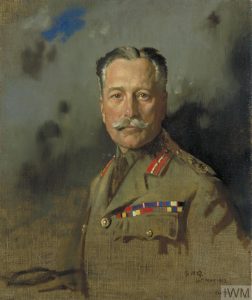
Nevertheless, developments later that year brought into the open serious differences between the two men concerning the conduct of operations on the Western Front. Concerned about the British Army’s heavy casualties during the first month of the Battle of the Somme, Churchill circulated a short memo—based on a surprisingly accurate estimate of the relative losses suffered by the British and German armies—arguing that the offensive was strategically fruitless and should be shut down. Haig—who received a copy of the memo days after it was presented to the cabinet—dismissed Churchill’s criticisms out of hand, speculating that “Winston’s head is gone from taking drugs.”4 The cabinet was similarly unconvinced; General Robertson reassured Haig that the “damnable paper” had convinced no one, and that Churchill and his supporters “have not a friend in the War Committee or anywhere else amongst honest men.”5
The possibility of Churchill leading a “conspiracy” against Haig nevertheless continued to trouble the general’s supporters. As late as October 1916, the editor of the Morning Post asserted that Churchill was part of an organized effort to “get rid of D. H. [Douglas Haig].”6 The Daily Mail, meanwhile, accused Churchill of attempting to “interfere with the plans” of the British Army’s high command.7 While Churchill may have wanted to interfere, however, he was unable to do it effectively so long as he remained outside of the cabinet. He privately complained about the competence of the army’s leadership, but refrained from publicizing his views outside of government circles, believing that open criticism would damage the army’s morale.
After rejoining the government as Minister of Munitions in 1917, Churchill made little effort to publicize his concerns about British strategy. Earlier that year, he had indicated his desire to “make his peace” with the BEF’s commander-in-chief.8 His attitude towards Haig was accordingly helpful—for the most part. Churchill kept within his sphere as Minister of Munitions and sought to avoid the appearance of meddling in matters that were properly the responsibility of military professionals. This does not mean that he abandoned his earlier concerns, however, and in November Haig’s intelligence chief saw fit to include Churchill in a list of the Field Marshal’s “attackers” in the government, asserting that Churchill was “out to down him.”9 Haig nevertheless had little cause for complaint, commenting in his diary that Churchill was “really doing very well and has quite stirred up his office.”10 The only significant sign of friction between the two men was Churchill’s insistence in September 1918 on planning for the continuation of the war into the following year; by that time, Haig judged that victory could be achieved in a matter of months.
After the Armistice, Churchill took up the office of Secretary of State for War and Air in January 1919. Although Leopold Amery warned the Prime Minister that he had heard “from all sorts of quarters that the Army are terrified of the idea” of Churchill serving as minister of war, Churchill took up the new appointment with little friction, helping to moderate Haig’s response to a non-violent
mutiny in Calais.11 Haig’s decision to accept the position of Commander in Chief Home Forces in April 1919 marked the effective end of his professional relationship with Churchill.
The Battle of the Memoirs
Throughout the 1920s, Haig and Churchill observed a kind of cease-fire while seeking vindication in the postwar “battle of the memoirs.” A two-volume account of Haig’s leadership of the BEF, published with Haig’s clandestine support in 1922, contained almost no references to Churchill. Haig evidently considered it unnecessary to address Churchill’s wartime criticisms directly; at most, he was lumped in with the critical school of thought with “its spasmodic outbursts of amateur strategy and tactics” that opposed the Somme offensive in the fall of 1916.12 Churchill took a similar approach when writing his own war memoirs, even going so far as to invite Haig to comment on the proofs of several chapters in which he figured prominently. Although warning that he was “a convinced and outspoken opponent to our offensive policy,” Churchill added that “these criticisms are expressed in terms appropriate to the pleasant personal relations…between us.”13 Churchill sent Haig copies of the newly published volumes in early 1927, thanking Haig for his help and expressing his hope that Haig “will regard them as the result of reflection devoid of ill-will.”14
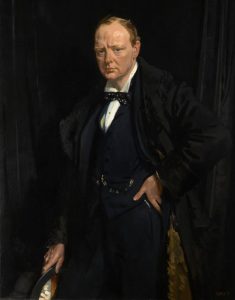
Haig, however, did not take the book’s criticisms in that spirit. In private correspondence, he stated that he considered Churchill’s discussion of the battles of the Somme and Passchendaele to be “most mischievous teaching,” speculating about what might be done to “prevent my countrymen from accepting Books [sic] such as Winston’s as giving true history.”15 The historian David French has even suggested that The World Crisis might have pushed Haig eventually to publish his own memoirs “as a counter-blast to Churchill’s book,” if not for the general’s death in 1928.16
Haig’s treatment in The World Crisis is nevertheless remarkably mild—at times misleadingly so. Just before introducing Haig, Churchill cautions the reader against “unworthy or uncharitable judgments,” writing that “the Great War wore out or justly or unjustly cast aside leaders in every sphere as lavishly as it squandered the lives of private soldiers.”17 While unwilling to temper his criticisms of British strategy, Churchill consistently faults others for Haig’s misjudgments. In this way, poor intelligence work and the pre-existing strategic situation take most of the blame for the Somme offensive. The Battle of Passchendaele likewise was only attempted because of misleading information supplied to GHQ (General Headquarters) by the Admiralty. Even worse than intelligence failures, however, was the influence of the CIGS. In the end, Churchill concludes that General Robertson—not Haig—was responsible for the major British offensives on the Western Front in 1916–17 that were, in his view, “costly failures.”18 One reviewer observed that Churchill was “almost unrestricted in his admiration for Haig.”19 That is not to say that Haig escaped from criticism for ordering offensives that were “as hopeless as they were disastrous.”20 Alternatives might have been embraced, Churchill wrote, “if only the Generals had not been content to fight machine-gun bullets with the breasts of gallant men, and think that that was waging war.”21 Few readers could have doubted that Haig was one of the generals in question.
But Haig’s generalship, unlike Robertson’s, was redeemed by the BEF’s victorious final campaign. As Churchill suggested privately, “Haig comes out all right in the end [in The World Crisis] because of the advance in 1918. Without this the picture would be incomplete.”22 Churchill’s praise for Haig’s conduct during the “Hundred Days” offensive is indeed generous and appropriate. His denigration of Robertson, however, is imbalanced and inconsistent with modern scholarship. Far from a proponent of unimaginative frontal assaults, Robertson in fact championed an innovative “step-by-step” approach resembling the “bite-and-hold” method used successfully during the latter part of the war.23
Churchill’s interpretation of Robertson’s role can be explained either as an error or as a deliberate deception. The former seems more likely than the latter. As a politician in London, Churchill inevitably saw more of Robertson than of Haig during the war. Robertson loyally supported Haig’s policies in his interactions with the War Cabinet, in spite of his personal misgivings, and his statements to the cabinet would have stuck in Churchill’s memory. Moreover, Churchill’s sources of information when writing The World Crisis included supporters of Haig such as the official historian Sir James E. Edmonds. These factors predisposed Churchill to give Haig the benefit of the doubt. On top of all this was Haig’s pleasant personal relationship with Churchill; in the end, Churchill wished to do a good service for someone he considered a friend.
Churchill’s Influence
As already noted, of course, this was not good enough for Haig, who seems not to have forgiven Churchill for The World Crisis before his death. Churchill’s own views, on the other hand, evolved over time, and his writing in the 1930s tended to be less generous to Haig. Churchill’s essay on Haig in his 1937 book Great Contemporaries, for instance, is a remarkable literary example of damning with faint praise. His description of Haig as “the head boy and prize pupil of the military school” is hardly flattering.24 In another essay, he suggests that Haig’s predecessor as Commander-in-Chief, Sir John French, was a more capable general who “would never have run the BEF into the same long-drawn-out slaughters” as Haig did in the Somme and at Passchendaele.25 Haig’s most positive quality, in Churchill’s account, appears to have been his upright character.
These comments reflect a general shift in popular attitudes towards the First World War. Negative accounts of British leadership—many of which built on Churchill’s own criticisms—became increasingly common during the 1930s and were well represented in novels, popular histories, and soldiers’ memoirs. Given this atmosphere, it is possible that Churchill felt comfortable publicizing a more critical assessment of Haig almost ten years after the Field Marshal’s death. Even so, Churchill never indulged in the kind of polemical attacks that were put forward by former Prime Minister David Lloyd George. Nevertheless, Churchill’s later writings have inevitably influenced interpretations of his earlier and more detailed statements on Haig’s generalship, and for this reason Churchill remains popularly—albeit somewhat misleadingly—identified as one of Haig’s staunchest critics.
Mason W. Watson is a history Ph.D. student at The Ohio State University and co-author with Stephen C. McGeorge of The Marne, 15 July–6 August 1918 (US Army Center of Military History, 2018).
Endnotes
1. Daniel Todman, The Great War: Myth and Memory (London: Hambledon, 2005), p. 90.
2. Martin Gilbert, ed., Winston S. Churchill, Companion Volume III, Part 2, May 1915–December 1916 (London: Heinemann, 1972), pp. 1334–35.
3. Ibid., p. 335 and p. 1196.
4. Gary Sheffield and J. M. Bourne, eds., Douglas Haig: War Diaries and Letters, 1914–18 (London: Phoenix, 2006), pp. 216–17.
5. David R. Woodward, ed., The Military Correspondence of Field Marshal Sir William Robertson, Chief of the Imperial General Staff, December 1915–February 1918, (London: Bodley Head, 1989), p. 79.
6. Gilbert, p. 1574.
7. “Politicians and Casualties: Hands off the Army!” The Daily Mail, 13 October 13 1916.
8. Charles à Court Repington, The First World War, Volume I, 1914–1918, (Boston: Houghton Mifflin Company, 1920), p. 517.
9. John Charteris, At G. H. Q. (London: Cassell, 1931), pp. 268–69 and p. 273.
10. Sheffield and Bourne, p. 371.
11. Martin Gilbert, ed., Winston S. Churchill, Companion Volume IV, Part 3, April 1921–November 1922 (London: Heinemann, 1977), p. 448.
12. George Albemarle Bertie Dewar and J. H. Boraston, Sir Douglas Haig’s Command, Volume I, 19 December 1915 to 11 November 1918 (London: Constable, 1922), pp. 170–71.
13. Martin Gilbert, ed., Winston S. Churchill, Companion Volume V, Part 1, The Exchequer Years, 1922–1929 (London: Heinemann, 1979), p. 884.
14. Ibid., p. 956.
15. Haig to Boraston, 22 April 1927, Boraston MSS, Imperial War Museum.
16. David French, “Sir Douglas Haig’s Reputation, 1918–1928: A Note,” The Historical Journal, 28:4 (1985), p. 958.
17. Winston Churchill, The World Crisis, 1916–1918 (New York: Charles Scribner’s Sons, 1927), pp. 30–31.
18. Ibid., p. 46.
19. Todman, p. 89.
20. Churchill, pp. 517–18.
21. Ibid., p. 348.
22. Robin Prior, Churchill’s World Crisis as History (London: Croom Helm, 1983), p. 213.
23. Paul Harris and Sanders Marble, “The ‘Step-by-Step’ Approach: British Military Thought and Operational Method on the Western Front, 1915–1917,” War in History, 15:1 (January 2008), pp. 24–25 and 27–28.
24. Winston Churchill, Great Contemporaries (New York: Putnam, 1937), p. 197.
25. Ibid., p. 68.
Subscribe
WANT MORE?
Get the Churchill Bulletin delivered to your inbox once a month.
